Genre: Platform Developer: NovaLogic Publisher: Sega Ent. Players: 1 Released: 1992
Captain Planet and the Planeteers was a 1990s animated series with environmental propaganda so blatant that I often found myself wishing the success of the antagonist’s ludicrous schemes to pollute the world for no reason. I certainly have nothing against the environment, but the show’s message was so lacking in nuance that it provoked the opposite reaction. It was one of those shows that I watched, though I didn’t really like it because it was on television after school, and I wasn’t allowed to play video games during the school week.
Captain Planet wasn’t alone. A lot of media at the time had similar themes, such as the short-lived Widget the World Watcher and certainly video games like Global Gladiators and the more notorious Awesome Possum. Something I was surprised to learn while looking back into the series was the star power behind it — at least in the earlier seasons. I had no idea that actors like Whoopi Goldberg, Meg Ryan, and Jeff Goldblum lent their voice talents to characters, as did many more. There was clearly a big budget behind it and no doubt the hope was that it would become a highly profitable media franchise. The expensive production behind the series is not at all reflected in the Mega Drive game of the same name, which is yet another typical licensed game.
It may have taken a while to come to the subject of this review, but it is worth giving context before proceeding. I do remember seeing this game on store shelves as a child and also remember that it was one of the cheapest available in my store of choice. I considered buying it on more than one occasion, but the screenshots on the back put me off, and I now know for sure that my instincts were correct. The publishers in the North American market were also wise not to publish it, and this game was exclusive in PAL regions.
I can be somewhat formulaic with reviews and often leave discussing visuals and sound effects until I’ve dealt with game mechanics. In the case of Captain Planet and the Planeteers, the audio/visual design immediately hits you in the face and boxes you around the ears from the title screen onwards. The music and sound effects are by far some of the most harsh and irritating sound effects I’ve heard on the system. The music is little better but is mostly hard to distinguish above the general cacophony in most levels. The visual design isn’t awful but was still dated at the time of the games release. The visuals are generally just serviceable though the still images of various characters from the show are quite good.
The animated series has plenty to draw from that could translate well into a video game, as the characters all have magic rings with different elemental powers. Combined together they bring forth Captain Planet, which is usually the way the battle was won in each episode. Only five of the four Planeteers are playable, with Ma-Ti and his “heart” power unsurprisingly relegated to story screens between levels. Wheeler’s “fire,” Linka’s “wind,” Kwame’s “earth,” and Gi’s “water” are represented but all effectively do the same thing with slightly different animations. The characters are really only distinguished by their visual designs and all are randomly assigned to the game’s four main areas when starting a new game. There was an opportunity to design an area for each character that made use of their powers in unique ways but this was not to be. Even in the final level, where you take control of the titular Captain Planet, you shoot the same sort of projectiles as the Planeteers —though he can at least fly as in the cartoon.
Although it doesn’t really matter, you are able to select levels much like in Mega Man, with a specific enemy from the television show represented for each. Verminous Skumm, Dr. Blight, Duke Nukem, Hoggish Greedily and Zarm all appear as enemies. These are all their actual names, too. If you’re scratching your head about Duke Nukem, he is a different character that actually predates the much better-known gaming anti-hero. They are all recognisable as their television counterparts, and the levels fit these characters thematically too. The problem really is that unlike in a game like Mega Man, there is no real advantage to be had by choosing to start with any level. There are no special powers to be obtained and no strategic advantages to choosing one before another.
The levels themselves generally have objectives, such as shutting off sewer pipes or destroying objects. After doing this, there is a boss fight. Every single level has projectiles or enemies flying and scuttling everywhere, and it is really easy to take hits from lasers, rats, robots, toxic waste, and strange little radioactive creatures. Most are difficult to hit and should generally be avoided if it is possible to do so. It is best to add here that the rings’ powers are limited and overuse against the relentless enemies will make the game’s objectives or boss fights harder.
When I first started playing it I found the constant barrages and attacks overly chaotic, but there is actually some logic behind it all. With practice, the levels are pretty easy and the health is generous enough (at least on lower difficulties), to get you through. The boss fights are similarly chaotic, though it was a little more obvious how to go about defeating them. The game’s controls are also quite stiff and jerky. The Planeteers can perform a number of different moves including jumping, swinging, and crawling but none of these actions are smooth. Thankfully, there are very few areas of the game that require precise platforming, so they don’t add much frustration.
With only five short levels, the game is over quickly and there are only a few difficulty settings to add replay value. The final level playing as Captain Planet was a bit more enjoyable, though he is just as susceptible to damage as the Planeteers. As with the powers for each Planeteer, the game could have been improved by making Captain Planet more unique and powerful.
Captain Planet and the Planeteers is not offensively bad, but it isn’t good. The only reason I’m not more scathing is because it took me less time to play through the game than it did to write this review. I was surprised to learn that this was developed by NovaLogic, a company much better known for the Commanche series and other military simulations on PC. I noticed the first in that series was released the same year, which indicates they almost certainly didn’t have their best team working on this. Not that I can fathom much sympathy, as I frankly don’t think the franchise deserved any better. Thankfully, if you’re after a game that makes clever use of elemental rings, Jewel Master remains an excellent option on the Mega Drive to this day.
SCORE 2 out of 10

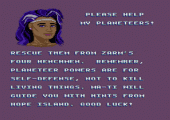
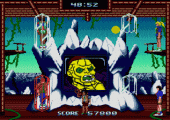
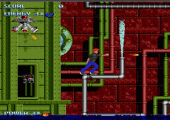
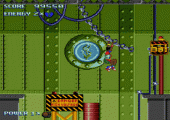
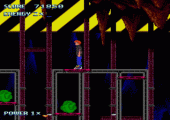
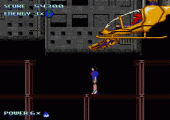
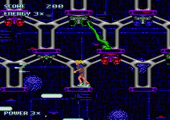
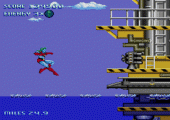
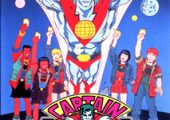
Recent Comments